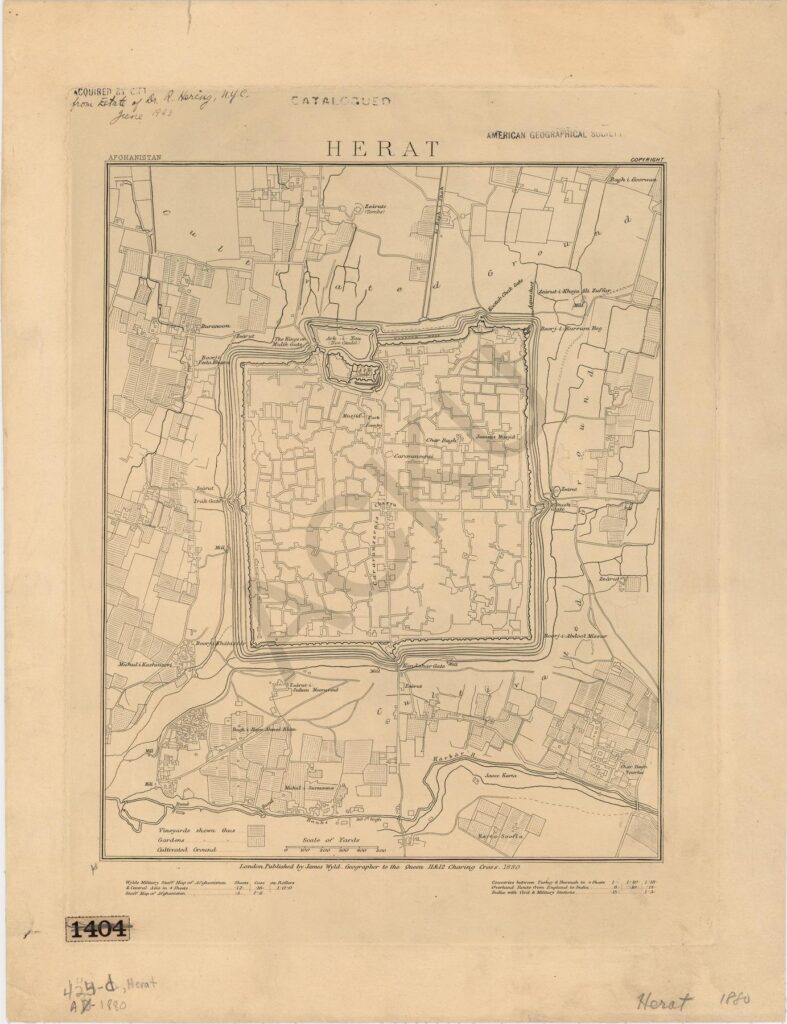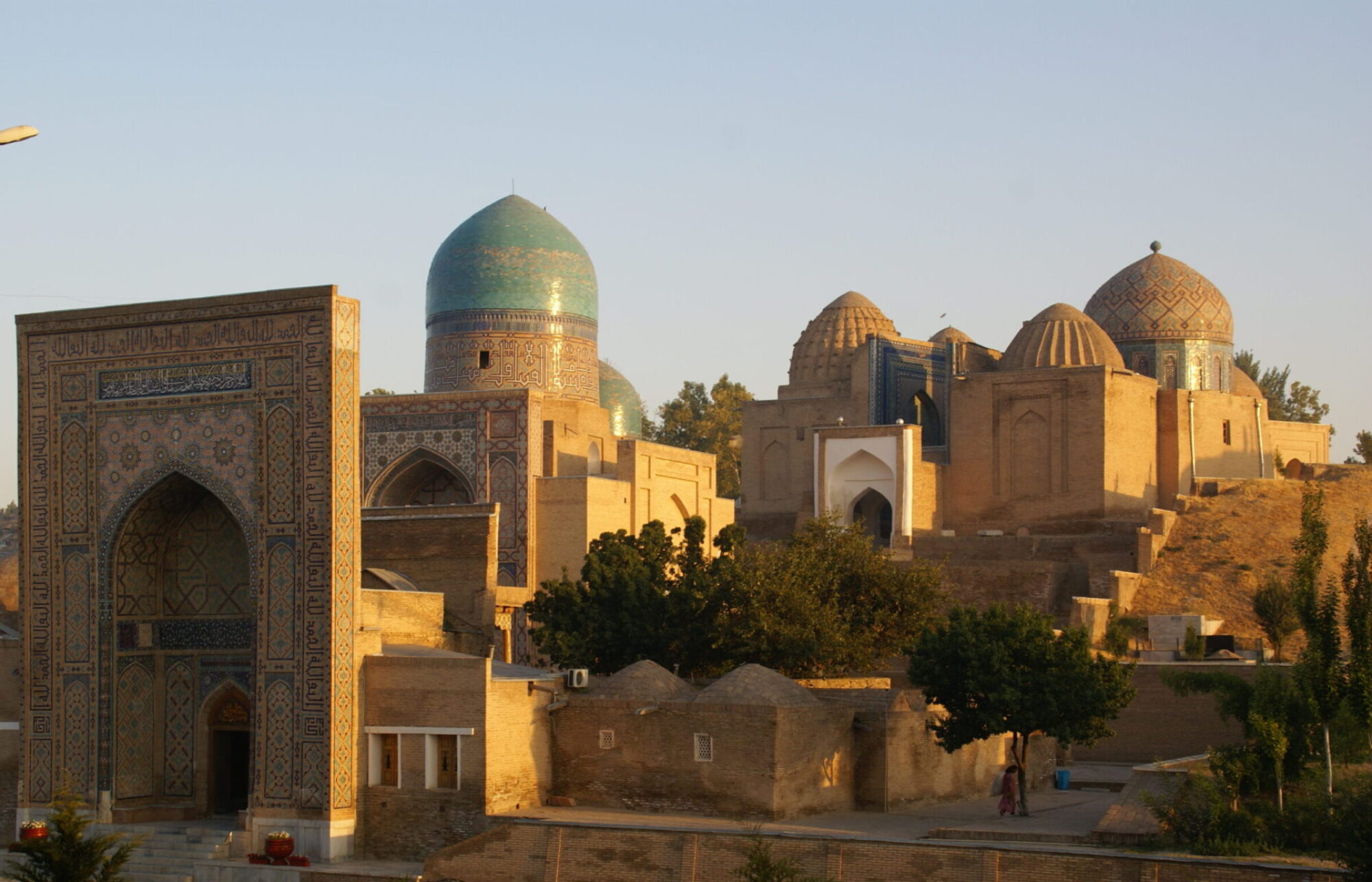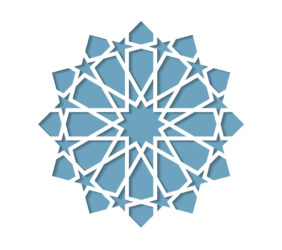Text taken from: Silk Road Cities. Documented through photographs, prints and postcards.
The city of Herat
Herat is situated in north-western Afghanistan. The ancient city became the capital of the Timurid Empire under Timur’s son Shahrukh (1377–1447) at the beginning of the 15th century. Being a centre of a large oasis along the valley of the Hari Rud river, Herat was established as an outpost of the Achaemenid Empire, the first Persian empire based in Western Asia, founded by Cyrus the Great (600–530 BC). Conquered by the Arabs in the 7th century, the city was not fully subdued until the early 8th century.
The urban plan is an orthogonal square with four main roads along the cardinal points, dividing the city into four identical quadrants. Each road stretched from a darvaza (gate) situated in the middle of the eastern, western and southern city walls. In the northern wall, there were two gates, one in the middle of the wall, and one extra gate in the north-western quadrant that provided direct access to the strong citadel. Beginning at each gate, a bazaar led into the centre of the city. In the 12th and early 13th century Herat was developed by the Ghurids, a medieval Islamic dynasty of the eastern Iranian lands, who established the Great Mosque to the east.
The Mongols sieged and devastated Herat in the 13th century but the city was rebuilt throughout the 14th century. The ancient orthogonal city plan and the complex system of water canals influenced the architecture of Timurid Herat. The dry climate and the lack of strong timber and stone have resulted in the usage of mud and baked brick as the main building materials. In 1380 Timur entered Herat, which was a large provincial town in the second half of the 14th century. The province of Khorasan was first given by Timur to his son Miranshah (1366-1408). However, trying to lessen the power of his sons, Timur transferred Miranshah to Azerbaijan in 1396 and awarded Khorasan to Shahrukh a few months later.
After Timur’s death in 1405, the war for his succession was resolved by Shahrukh establishing Herat as the new capital of the Timurid Empire and entrusting the former capital Samarqand into the hands of his son Ulugh Beg (1394-1449). This was the beginning of Herat’s greatest period of literary and artistic achievements that flourished under Shahrukh (r. 1409-1447) and his wife Gawharshad (d. 1457), reaching its apogee under the widely celebrated patron of the arts Sultan Husayn Mirza Bayqara (1438-1506), the last Timurid ruler of major importance in Khorasan. The Timurid period ended with the Uzbek conquest in 1507.
Although very few Timurid structures survive in Herat, their architecture, plans and locations have been reconstructed based on Timurid histories, royal decrees, legal documents, biographical collections, and epistolographic literature. The main Timurid buildings include the refurbishment of the Great Mosque, the Gawharshad Mosque, her madrasa and mausoleum, and the famous shrine of Gazurgah. The Great Mosque situated in the north-eastern quadrant was established under the Ghurids in 1200 and contains the tomb of the Ghurid ruler Sultan Ghiyath aI-Din. Built on a four-iwan plan with a central courtyard, the main longitudinal axes is oriented east-west. Although a few traces of 12th century stucco decoration remain, the mosque was considerably restored and modified under the Timurids.
A map of Herat from 1880 is available here

Sources for Herat
Archnet: Old city of Herat; Gawharshad; Abdullah Ansari Shrine


